The creek is surrounded by forest. When I first got there I was afraid it was going to be too dark. Even after the sun peeked out, the valley floor was still pretty dark. But I decided I would see what I could do even with the dark conditions.
I wanted to take several kinds of shots. I wanted the big picture shots, where you could see the creek and its surroundings. You can see what I mean about it being dark - to get the proper exposure, the water is very silky.

Then I wanted to zoom in and see what I could do with the cascades.
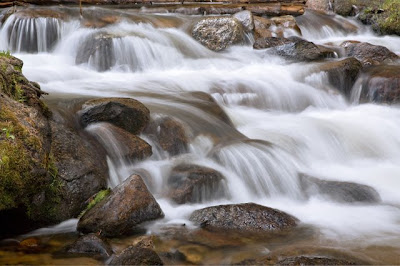
I had only taken my 24-105mm lens and I wondered if that was going to be enough to get the intimate landscapes in the creek that I was hoping for. I begin to zoom in closer more detailed shots of the water and the rocks.

It is amazing how going vertical changes the image.
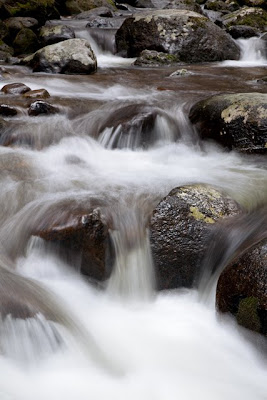
I then zeroed in on a couple of rocks to get an even more intimate landscape. I also played with saturation on this one.
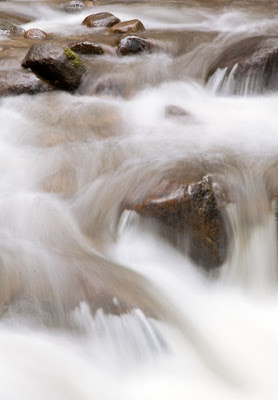
I was fascinated by the natural scallops in the water here.
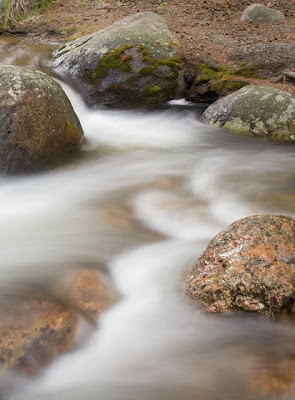
I stayed in one location quite a while, but decided that I need to check out some of the other areas along the creek to see what else I could find. I followed some of the same techniques - shooting both the larger view and trying to get those intimate landscapes.
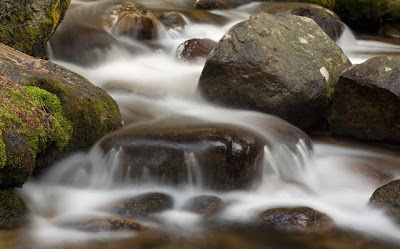
Tips for stream and water photography:
Shade or cloud cover is best to avoid getting blown out whites in the water.
Set your camera for aperture priority for the maximum sharpness of your lens. For me that is F/16. The amount of available light will determine how much water blur you will get. In very bright situations you can use a solid neutral density filter to reduce your shutter speed to make the water silkier. For this day I played with the ISO. Normally for landscapes I set the ISO to 100 which is the lowest possible on my camera to avoid noise. However, because the water was getting so blurred out I tried higher ISO's to see if I could get the look I wanted for the water.
Use a polarizing filter. I forgot on some of my shots, but it takes away some of the shine on the rocks bringing out their true color as well as giving more detail in the water.


No comments:
Post a Comment